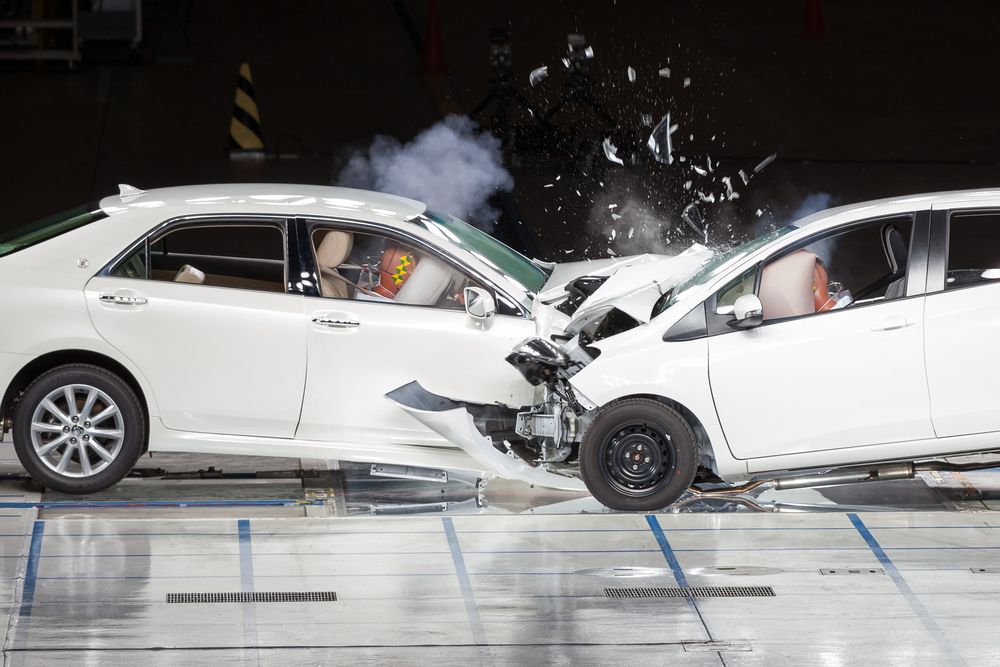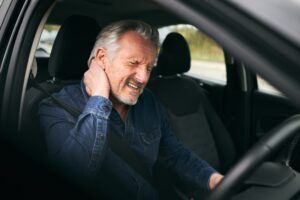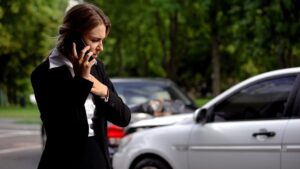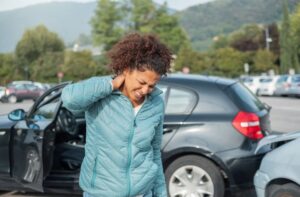The United States has over two hundred million registered drivers on its roads, and Americans collectively spend over 70 billion hours on the road every year. In 2019, police reported almost seven million crashes involving motor vehicles. Two million crashes resulted in injury. Even people who have only experienced relatively small collisions report symptoms of unexplained pain, tension, and headaches after a car accident.
A study by the National Highway Traffic Safety Administration examined a sample of car crashes to determine the cause. Of the almost 6,000 crashes studied, 94% of the causes behind them were attributed to drivers. Human error appears to be the biggest contributor of collisions every year. But what does human error look like?
Distracted Driving
Drivers who are inattentive during driving are some of the most dangerous people on the road. Every day in the United States, distracted driving causes over a thousand car accident injuries and at least nine deaths. When you are distracted, you miss important cues that help you make decisions while driving, and your ability to react to potential problems becomes impaired.
Distracted driving can take the form of any activity that requires your attention to be removed from the road for any length of time. Even just two seconds of looking away from the road can cause collisions. This could mean eating or drinking, talking with passengers, or even glancing too long at your GPS. The biggest reason people are distracted during driving, however, is due to cell phone use. Using a cellphone while driving increases your risk of a car accident by up to six times compared to driving without distraction. Teens are at the biggest risk for this, so it is important to educate new drivers on the importance of driving without distraction.
Driving Under the Influence
Drunk driving contributes to 28% of all traffic-related deaths, and 17% of the over ten thousand deaths caused by drunk driving each year are of children aged 0 to 14 years old. (Drugs make up another 16% of traffic-related deaths.) You are considered legally intoxicated, and thus a driver under the influence, when your blood alcohol content reaches .08 grams per deciliter. This is the equivalent of two small glasses of wine. At this level of intoxication, you may feel a light buzz. You may feel relaxed and warm, but you will also be experiencing impaired judgment and an impeded ability to do more than one task at a time.
Speeding
The odds of dying in a car crash due to speeding is pretty significant. Car accidents involving speeding accounted for almost 10,000 deaths in 2019 alone, which makes up 26% of all motor vehicle deaths. Moreover, 55% of all car accidents in the United States are caused by speeding. The National Highway Traffic Safety Administration states that speeding-related motor vehicle collisions are defined as any crash involving a driver that has been driving too fast for conditions, going above the posted speed limit, or racing.
Speeding makes it difficult for drivers to react to problems with the timing they require. It makes it more difficult for drivers to control their vehicles, and it makes it harder to suddenly stop when necessary. Crashes involving speeding tend to result in more severe injuries due to the increase in the force of impact.
Fatigue and Drowsiness While Driving
Did you know that one in twenty-five adults has admitted to driving while feeling too tired to keep their eyes open or even falling asleep during the last thirty days? Drowsy driving caused almost 300 deaths in 2019 and is the contributor to nearly 100,000 crashes each year.
Some people are more at risk of drowsy driving than others. Those most affected are commercial drivers, such as people who drive delivery trucks, people who work the graveyard shift, people whose medications cause drowsiness as a side effect, and people who get less than an average of six hours of sleep each night. Accidents involving drowsy driving also tend to happen at specific times. Most car crashes involving a sleepy driver happen between six AM and midnight or in the late afternoon since these are the times of day when most people experience dips in energy caused by circadian rhythms. Drowsy driving tends to involve just one driver or car and most often occurs on highways or rural roads.
Environmental Driving Obstacles
Sometimes, accidents happen for reasons other than human error. Environment can have a major effect on a driver’s ability to properly react to the other drivers around them or their ability to control the car as needed. The quality of the roads you use can also have an impact on your risk of having a car accident. Slick roads due to ice or rain cause nearly 50% of these kinds of car accidents, but other factors may include obstructed views, roadway design, improper or inadequate signage, and glare.
Vehicle Malfunctions
Another form of collision that occurs outside of human error are those that result from mistakes in the functioning of the cars themselves. For this reason, car manufacturers monitor the vehicles they have released and put out recalls for any vehicle that may pose a risk. Sometimes, however, individual vehicles have malfunctions that cannot be predicted by manufacturers. It is important to get your car examined according to the schedule provided by your manufacturer and to respond in a timely manner to any alerts your car may provide, such as your check engine light.
Avoiding Car Crashes
- Make sure to always pay attention to the road. If necessary, put a Do Not Disturb setting on your phone, or place your phone somewhere that will not distract you while driving.
- Never text and drive.
- Wait at least two hours after imbibing any alcohol before driving. After this length of time, alcohol has usually gone through your system.
- Before setting out on long road trips, make sure you are fully rested. If you begin to feel drowsy, either switch with a driving partner or pull over and drink one to two cups of coffee.
- If you take medication that makes you drowsy, pay attention to warnings on the label, and take public transportation if possible.





